Cartagena de Indias, also known as the “Jewel of the Caribbean,” is a vibrant and historic city located on the northern coast of Colombia. There are plenty of things to do in Cartagena Colombia, whether you’re interested in its colourful colonial architecture, stunning beaches, and rich cultural heritage.
Like me, many travellers love exploring the city’s historic landmarks, such as the Castillo San Felipe de Barajas and the Catedral de Santa Catalina de Alejandría, stroll through the charming streets of the Getsemani barrio, or relax on the sandy beaches of Islas de Rosario. Foodies will also love the local cuisine, which includes a range of delicious seafood dishes and tropical fruits.
With so much to see and do, Cartagena is a destination that should be on every traveller’s bucket list.

History of Cartagena Colombia
Founded in 1533 by the Spanish conquistador Pedro de Heredia, Cartagena was an important port and commercial centre during the colonial period. The city’s strategic location made it a frequent target of pirate attacks and naval battles throughout its history.
Cartagena played an important role in the fight for independence from Spain in the early 19th century. In 1811, the city declared independence and became the first Colombian city to do so. However, it was not until 1821 that the city was liberated from Spanish control.
Inside the Walled City: Best Things To Do in Cartagena Colombia
Take a free walking tour of Cartagena
Taking a free walking tour of Cartagena is an excellent way to explore the city’s rich history and vibrant culture. These tours are usually led by local guides who are passionate about the city and its traditions and provide visitors with an in-depth look at the city’s colonial architecture, museums, and hidden gems.
Some popular walking tours in Cartagena include the Old City Walking Tour, which takes visitors through the historic walled city, highlighting its colonial architecture and landmarks such as the Cathedral and Plaza Santo Domingo. Other tours include the Graffiti and Street Art Walking Tour, which showcases the city’s vibrant urban art scene, and the Street Food Walking Tour, which introduces visitors to local cuisine and drinks.
Free walking tours are my go-to when I arrive in a new city. However, when I arrived for this free walking tour so did 40+ other people arrived so I did slope off before it set off. If you’re anything like me and you’d prefer to immerse yourself in the experience, it might be best to book a small group tour of Cartagena, making it to ask questions and interact with the local guide, delving deeper into city’s heritage.
Walk on the Walls of Cartagena
The walls, which date back to the 16th century, were built by the Spanish to protect the city. Cartagena de Indias was a key port for trade so leaving it open to attacks by pirates and other invaders.
Walking the walls allows you to appreciate the history and beauty of Cartagena from a different perspective. They offer stunning views of the Caribbean Sea and the city’s rooftops and architecture, especially at sunset. It becomes clear why UNESCO World Heritage status was granted for having the most extensive fortifications in South America.
Walk through the Puerta del Reloj
Puerta del Reloj, also known as the Clock Gate, is an iconic landmark in Cartagena, Colombia linking the squares Plaza de Independencia and Plaza de los Coches. It features a clock tower and a large archway adorned with intricate carvings and sculptures.
It was originally constructed in 1631 and was named the Boca del Puente (Mouth of the Bridge) as it connected Getsemani to the Old City via a drawbridge across a moat. The name Torre del Reloj came at the start of the 18th century when the clock to the top of the gate was added with a US timepiece and replaced by a Swiss-made clock in 1937, which is still ticking away to this day.
The modern-day Puerta del Reloj is a tourist hotspot, serving as a gateway to the bustling streets of the old town, a meeting place for walking tours, and street food carts.
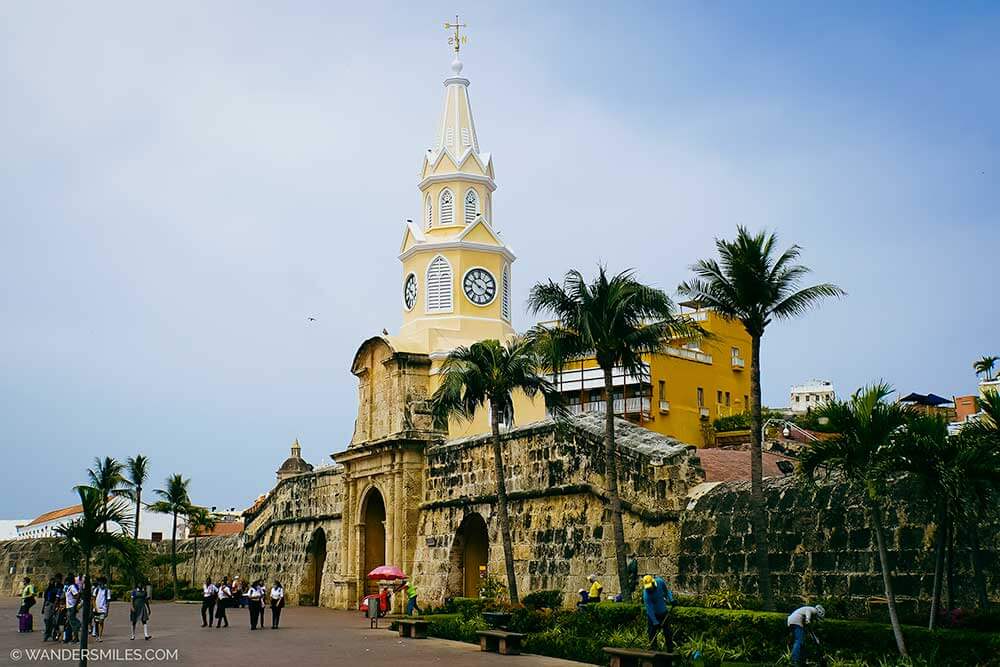
Visit the Museo Historica de Cartagena
The Museo Historico de Cartagena is in a beautifully restored colonial-era mansion that overlooks the Plaza de Bolivar. The building has a grandiose entrance built in the Baroque style and a small window to the side which for used for denouncing heretics. Spot the simple crucifix above the window with the inscription, “Ventana de la Denuncia.”
The collection at the Historical Museum of Cartagena includes paintings, sculptures, furniture, and other objects that highlight the diverse influences that have shaped Cartagena’s history, from indigenous cultures and colonialism to the African diaspora and contemporary life. One of the museum’s most famous exhibits is the Inquisition Room, which features sinister instruments of torture used by the Spanish Inquisition during the colonial period.
The entrance fee for Museo Historico de Cartagena is 23,000 COP (prices correct May 2022). The information is displayed in English and Spanish but there are guided tours are available in both languages too.
Whether you’re a history buff, an art lover, or simply seeking to learn more about the city’s dark history, the Museo Historico de Cartagena is an essential stop on your itinerary.
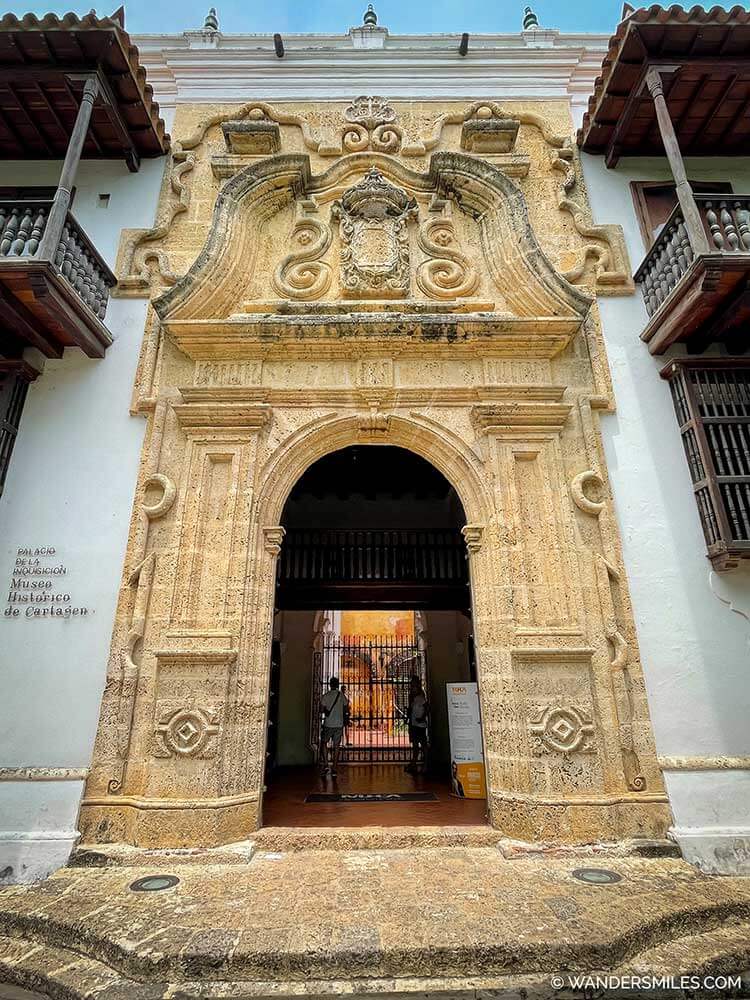
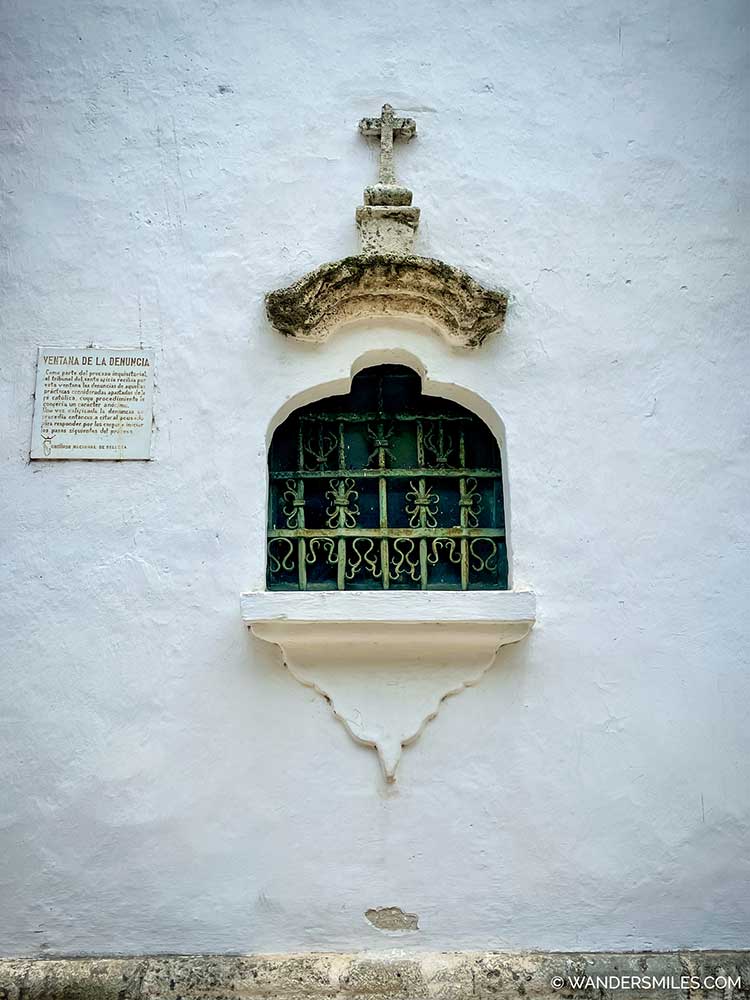
Relax in Parque de Bolivar
Parque de Bolivar is a Spanish-style plaza located in the middle of Palacio de la Inquisición, Catedral de Cartagena and Casa del Cabildo, the Plaza is also surrounded by Banco de la República and Museo del Oro de Cartagena.
It was originally named Plaza de la Catedral, and in 1610, when the Court of the Inquisition was established, it adopted the name Plaza de la Inquisición. The plaza was the scene of the first Act of Faith or sentence for heresy.
On 11 November 1896, the Council changed its name to Plaza or Parque de Bolívar, named after Simon Bolivar, the famous South American liberator who played a crucial role in the independence of several Latin American countries. A statue of Simon Bolivar stands majestically in the centre of the park.
Parque de Bolivar is a peaceful haven to shade under the trees, it’s hard to avoid on the tourist trail in Cartagena de Indias.

Visit Museo del Oro Zenú
Museo del Oro Zenú (Gold Museum of Cartagena) features a large collection of gold artefacts, including intricate jewellery, masks, and ceremonial objects, all crafted by the various indigenous groups that lived in the region before the arrival of the Spanish.
Whilst you can learn about the rich cultural heritage of Colombia and the significance of gold in the lives of its people, it is a lot smaller than the Gold Museum in Bogota which blew me away.
Visit Catedral Santa Catalina de Alejandria
Catedral Santa Catalina de Alejandria, located in the Plaza de la Proclamación, is named after Saint Catherine of Alexandria, a patron saint of the city of Cartagena Colombia.
Construction was completed in 1612 to replace a more primitive church that was destroyed in 1552. The building was delayed after Francis Drake arrived causing havoc, looting the city, and destroying the cathedral with cannons.
The cathedral was designed by the master builder Simón González, who used basilicas in Andalusia and the Canary Islands as inspiration. The current tower was designed by the French architect Gaston Lelarge, the result of a refurbishment at the beginning of the 20th century.
The striking façade is typical of the colonial architecture found throughout Cartagena, and a bronze statue of Pope John Paul II lies just beside the side wall. The interior includes three naves, carved wooden reliefs, intricate golden altarpieces, frescoes, and sculptures.
The cathedral is considered one of Cartagena’s most important religious buildings and can be seen majestically rising above the buildings from many blocks away. It’s definitely worth taking a look at this architectural beauty!
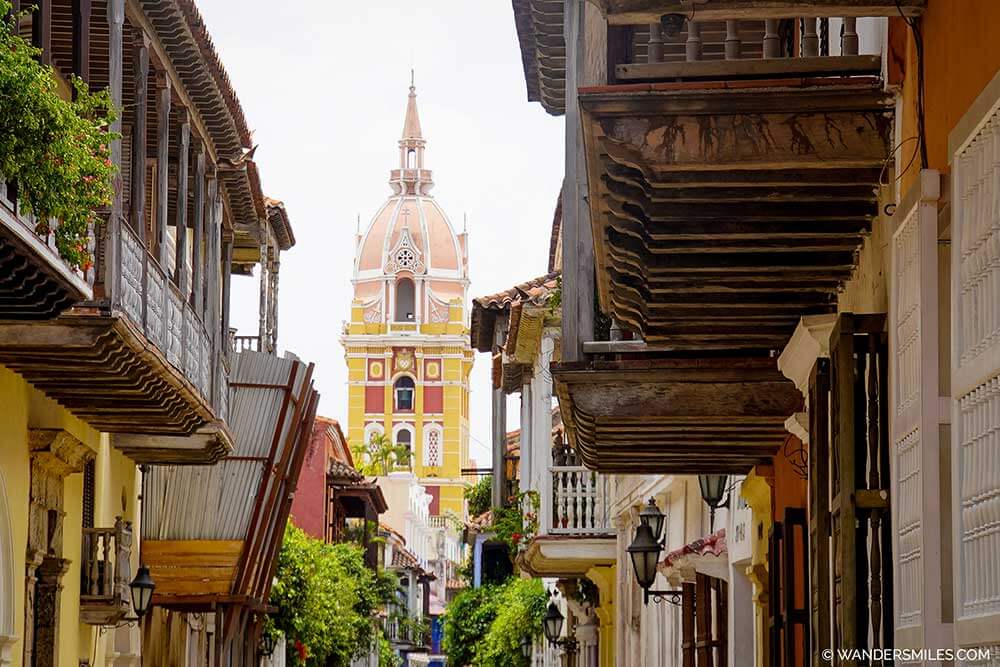
See La Gorda Botero sculpture
The Botero Sculpture in Plaza Santo Domingo is a unique and impressive piece of public art named “La Gorda Gertrudis” or colloquially known as “La Gorda Botero”. The sculpture is a creation of renowned Medellin-born artist Fernando Botero, who is known for his larger-than-life sculptures that often feature exaggerated proportions. The sculpture in Plaza Santo Domingo depicts a voluptuous woman sitting on a chair, and has become an iconic symbol of the city.
Whilst you are in the Plaza Santo Domingo taking snaps of the Botero’s sculpture, it is worth popping your head into Iglesia de Santo Domingo, the oldest building present in the city.

Visit Teatro Adolfo Mejia
Teatro Adolfo Mejia (Teatro Heredia) is a stunning neoclassical theatre overlooking the Plaza de la Merced. Built in 1911, the theatre is named after a prominent Colombian composer and conductor, Adolfo Mejia.
The theatre’s design was inspired by the Tacón Theatre in Havana and the Reina Emma Theatre in Curaçao. This Cuban-Caribbean influence can be seen in the grand façade which features a series of arches and columns, while the interior is adorned with ornate frescoes, and chandeliers.
Teatro Adolfo Mejia has played an important role in the cultural life of Cartagena, showcasing local and international talent and contributing to the city’s reputation as a vibrant centre of arts and culture. Whether you’re a lover of the performing arts or simply seeking to experience the elegance and beauty of this historic building, the Teatro Adolfo Mejia is a must-visit attraction in Cartagena.
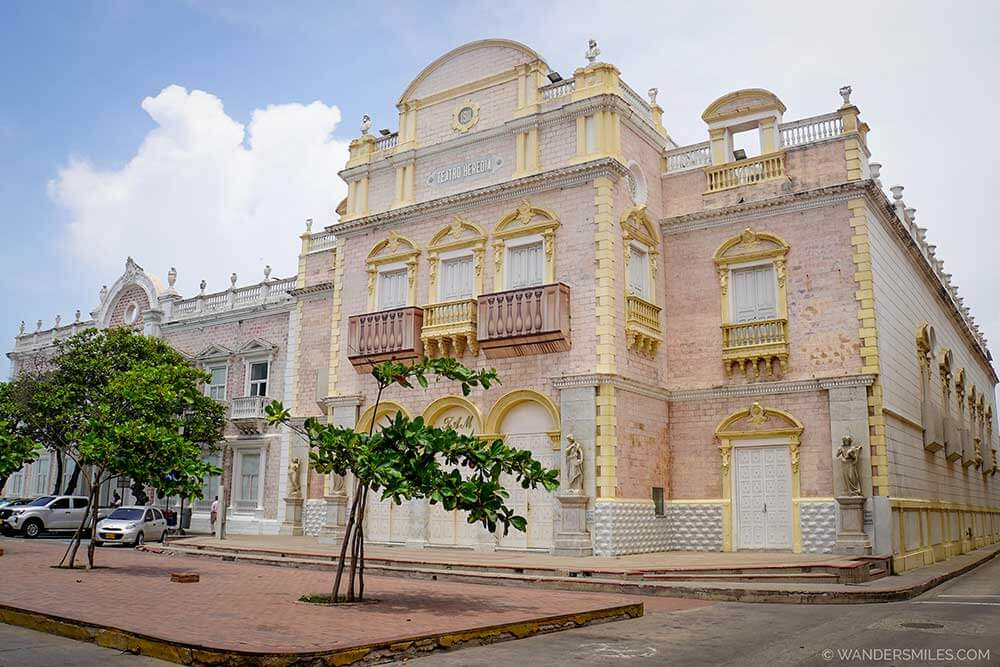
Buy fruit from the Palenqueras
If you’re looking to buy fresh and tasty fruit in Cartagena, the Palenqueras are a great choice. These Afro-Colombian women, one of the symbols of Cartagena’s culture, are dressed in colourful traditional attire, with ruffled, flowing skirts and matching headscarves, and carrying baskets of fruit on their heads.
The Palenqueras sell a variety of tropical fruits from the region, such as mango, pineapple, papaya, and watermelon, as well as refreshing coconut water. Buying fruit from the palenqueras supports local vendors and their families, plus, interacting with these friendly and charismatic women is a memorable experience in itself.
The Palenqueras are women from San Basilio de Palenque, which is the last remaining walled community called palenques, which was founded by escaped slaves as a refuge in the 17th century. This small village kept its century-old traditions almost so intact that it was recognised by UNESCO as an Intangible Heritage of Humanity in 2005.
>> FIND OUT MORE ON THE FREEDOM TOUR OF PALENQUE
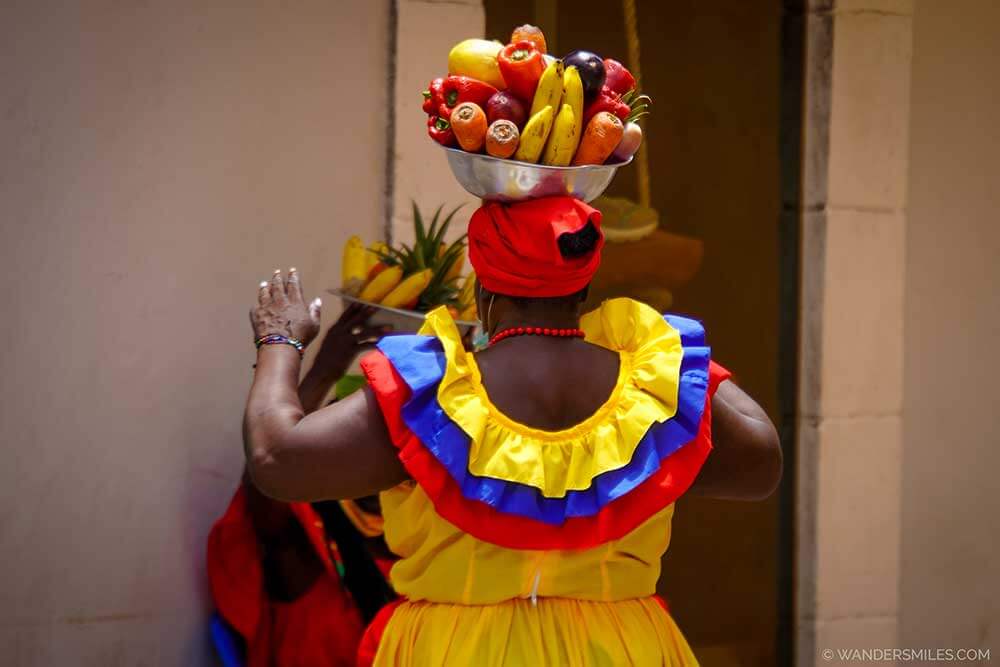
Climb the Bell Tower of San Pedro Claver
Santuario de San Pedro Claver is a striking church and cloisters built by the Jesuits. The church was named after the Spanish-born monk Pedro Claver (1580–1654), a Jesuit missionary known as the patron saint of human rights, slaves, African missions, and interracial justice.
The original church was built in 1580 and later rebuilt in the 17th century in a Mannerist style with some Baroque influences. The remains of St Pedro Claver lay inside the church.
Enter the church from the pretty Plaza de San Pedro Claver, Cartagena Colombia, where you are greeted with a lush courtyard with plants towering over three floors.
There is a museum showcasing the history of Pedro Claver and his life dedicated to the slaves including his and the slave’s humble living quarters. The Jesuits canonized him as a Catholic Saint in 1888, and collected pre-Colombian indigenous peoples artifacts and ceramics, religious and Afro-Caribbean art to keep his legacy alive, and are on display in the galleries.
For a unique vantage point, ask for an extra ticket to climb the bell tower of San Pedro Claver, the dome was built in 1921 by the French architect Gastón Lelarge. Seeing the panoramic views of Cartagena’s historic centre, the Caribbean Sea, and the nearby Castillo San Felipe de Barajas is one of the most memorable and rewarding things to do in Cartagena Colombia.
San Pedro Claver Museum is open daily 10 am – 5 pm. Entrance fee of 16,000 COP plus an additional 10,000 COP to climb the bell tower (May 2022).
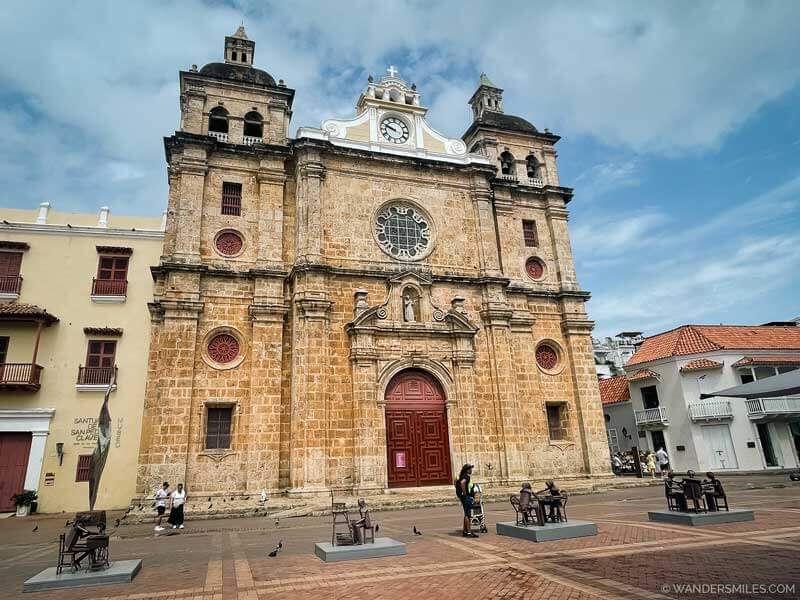
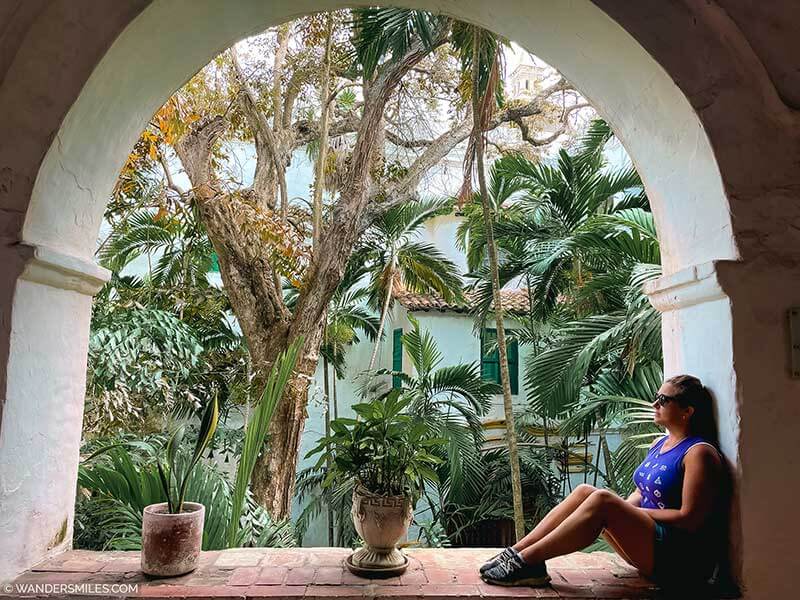
Shop in the Las Bóvedas
Las Bóvedas (The Vaults) is connected to the city walls of Cartagena, Colombia. It was built in the 18th century as a military storehouse for weapons and ammunition during colonial times.
The bright yellow-orange structure is a series of 47 arches and 23 domes that houses a number of shops selling handicrafts, traditional Colombian clothing, miniature Botero statues souvenirs, and local products, as well as a great selection of restaurants and cafes. Las Bóvedas’ thick walls and arches offer a cool and shady respite from the heat of the day.
Watch the street performers
Street performers are a common sight in Cartagena, adding to the vibrant and lively atmosphere of the city. From musicians playing traditional Colombian music to dancers, freestylers, and acrobats showcasing their skills, there is no shortage of talent on display.
Many of the performers can be found in the city’s historic district or Getsemani, entertaining crowds of tourists and locals alike, and some ask you a few questions leading to a dedicated rap about you. Watching a street performance is not only a great way to enjoy the city’s culture and traditions, but also a way to support local artists and performers.
Watch the sunset from a rooftop bar
Watching the sunset from a rooftop bar in Cartagena, Colombia is a must-do activity for any visitor to the city. The city’s warm climate with a creative cocktail list and local cervezas, and a beautiful backdrop to the city’s colonial architecture, is bound to be a winner.
I headed for Mirador Gastro Bar when I hit the city with views of the cathedral to one side and Puerta de Reloj on the other. Another popular rooftop bar in Cartagena includes Café del Mar, located on the city walls with stunning views of the Caribbean Sea.
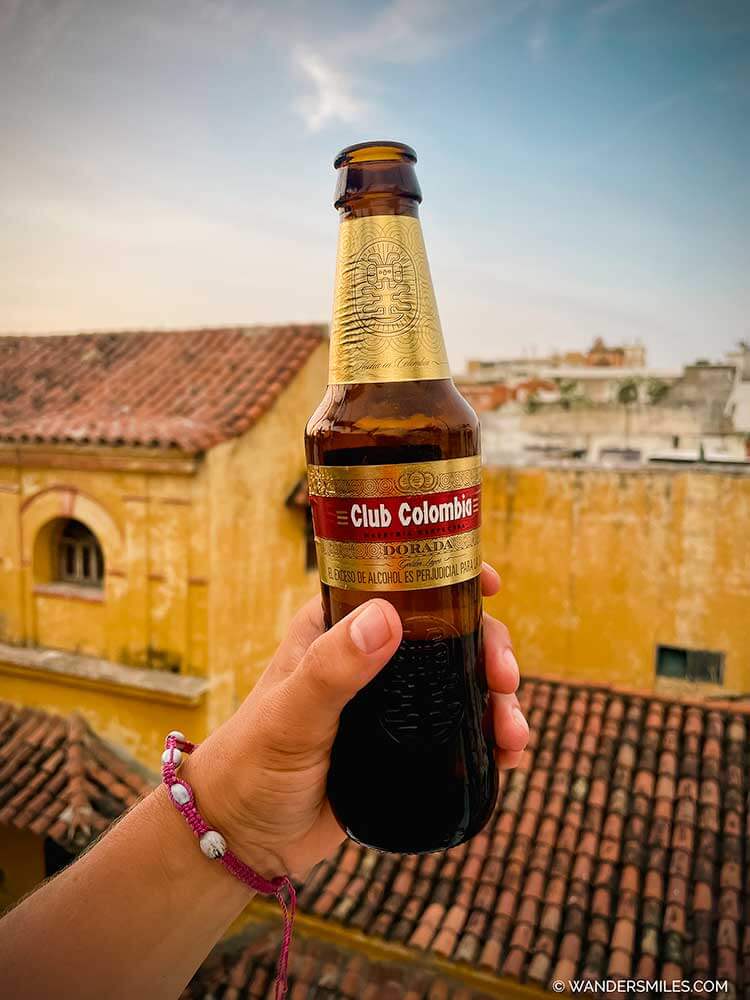
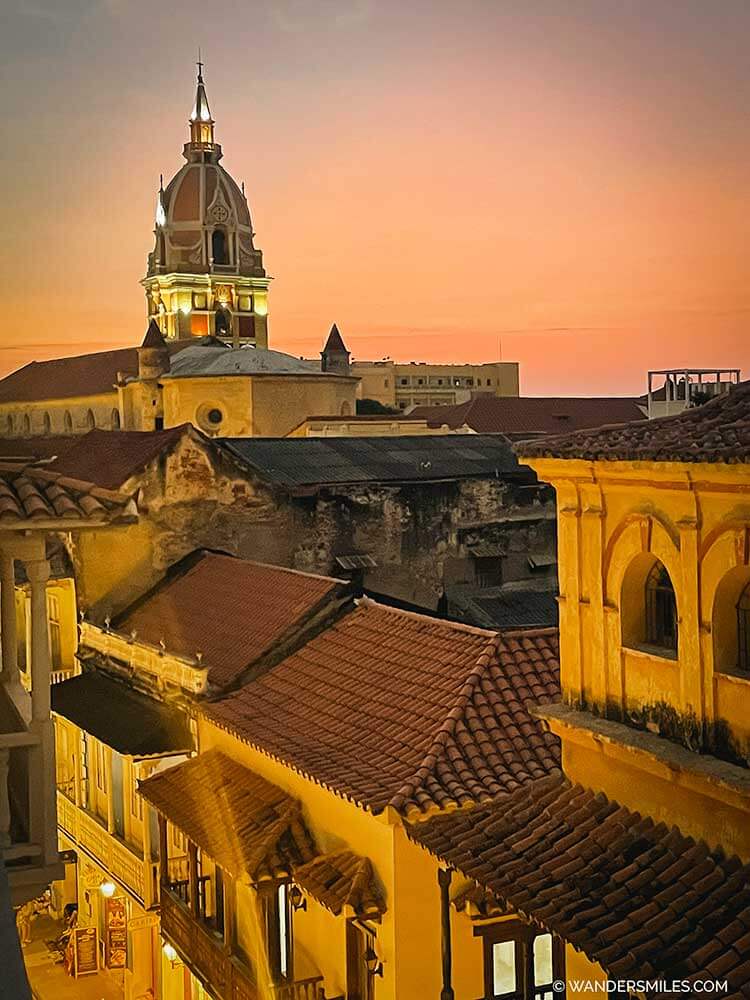
Things To Do outside the Walled City of Cartagena
Explore Getsemani
Getsemani is a hip barrio in Cartagena, that you simply cannot miss – I absolutely loved the vibe! Once a working-class district, it has now become one of the city’s trendiest and most popular areas, known for its lively street art, vibrant music scene, and delicious food.
There are so many cool things to do in Getsemani Cartagena, and I’d recommend your starting point should be a graffiti art tour by a local resident. Hearing a passionate presentation of the social and political background as you wander around the colourful neighborhood adorned by murals and sculptures.
Some of the top sights in Getsemani include the Plaza de la Trinidad, a central square that comes alive at night with street performers and live music; the Iglesia de la Trinidad, a historic church that dates back to the 17th century; and the Plaza de la Santisima Trinidad, another popular gathering spot with a lively street food scene.
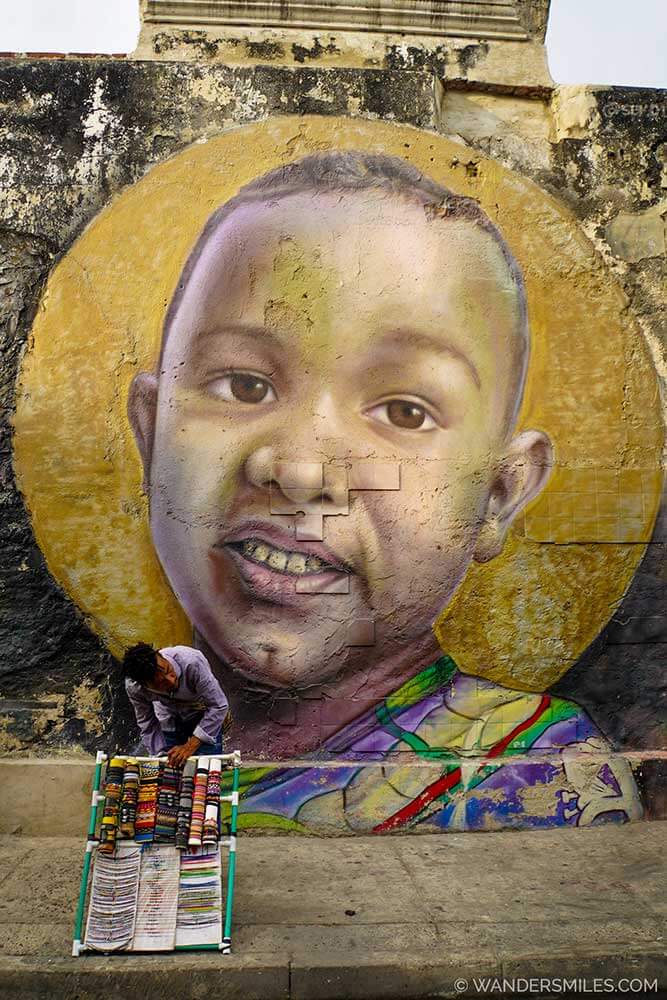
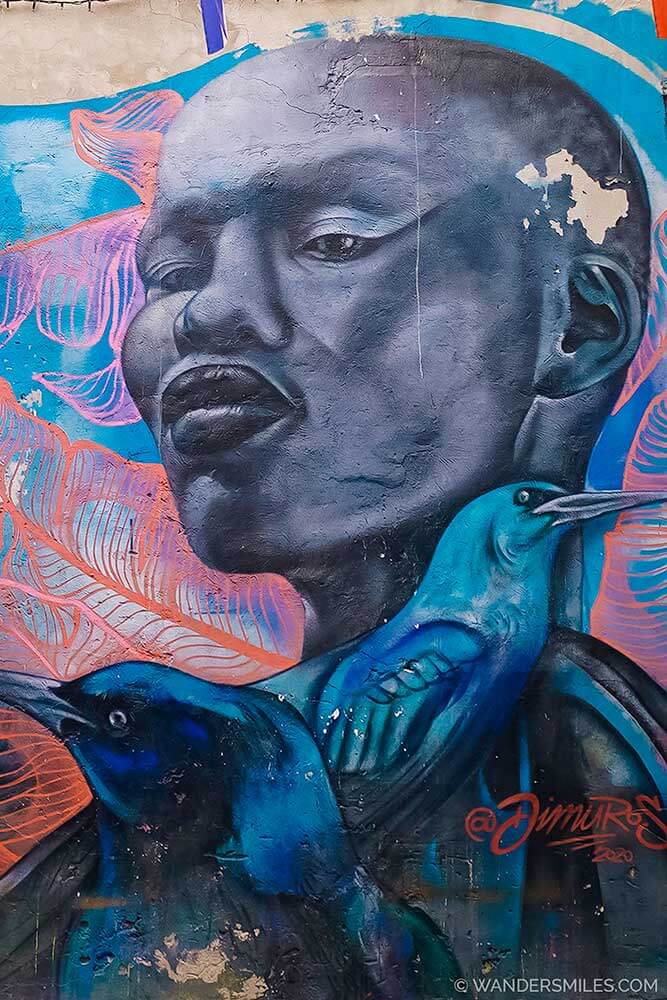
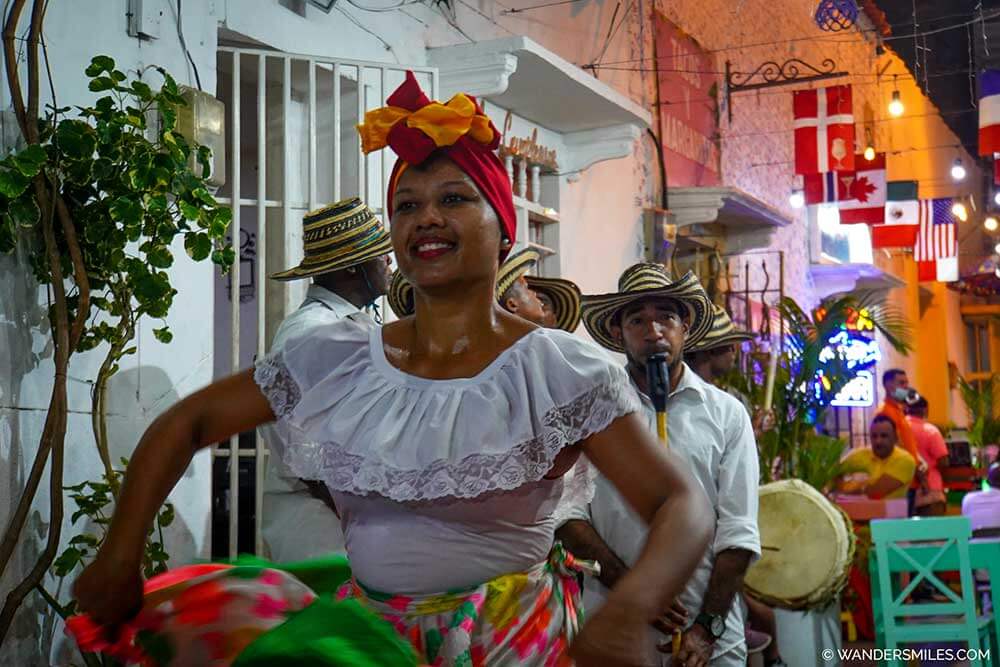
Watch wildlife in El Centenario Park
Don’t be in a rush to reach Getsemani as you cross from the Old Cityof Cartagena Colombia. Make a little time to appreciate Parque del Centenario which commemorates those who lost their lives during the revolt for independence in Colombia.
Opened in 1911 in accordance with the plans of Luis Felipe Jaspe, who was inspired by the Luxembourg Gardens in Paris. It was pictured as a contemplative park, so he designed it with a large number of trees, a pond, and a stage for the performance of classical music.
Independence Park is like an urban safari as it is home to several animals such as Andean squirrels, grey titi monkeys, Maria Mulata crows, Iguanas, and even sloths hanging from the branches. You can’t miss the sighting of the sloths as you will see a group of tourists pointing up at the slow-moving creature and I was lucky to see a baby sloth holding on to a mummy sloth’s chest.
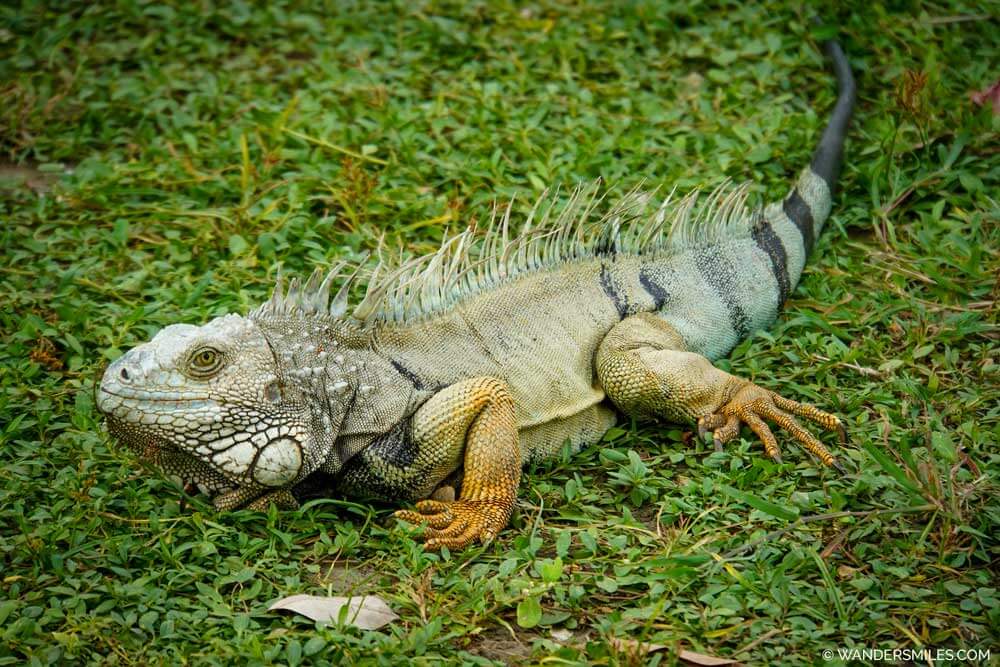
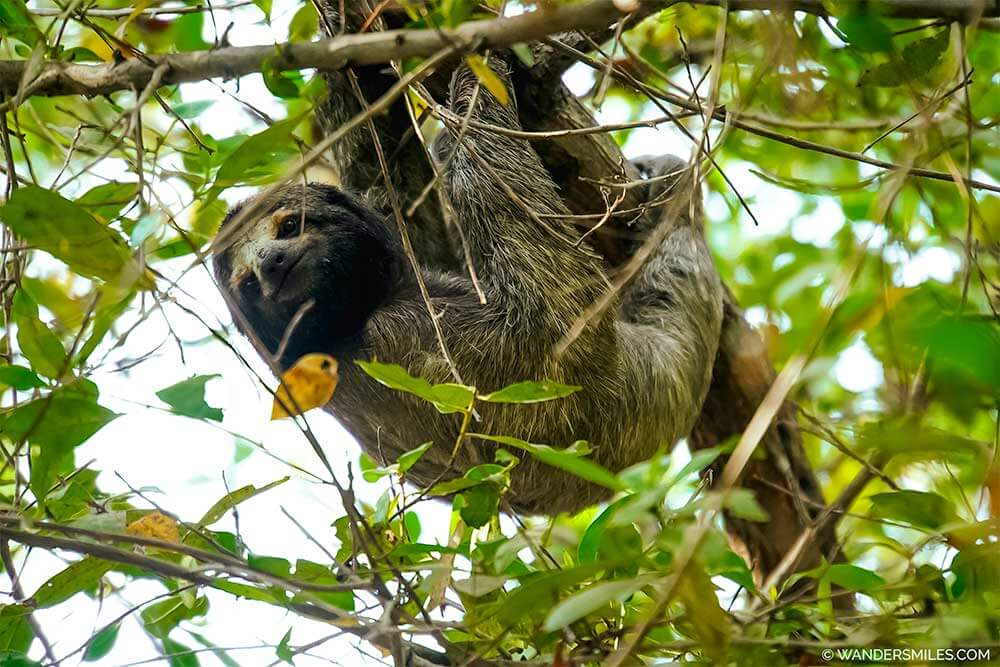
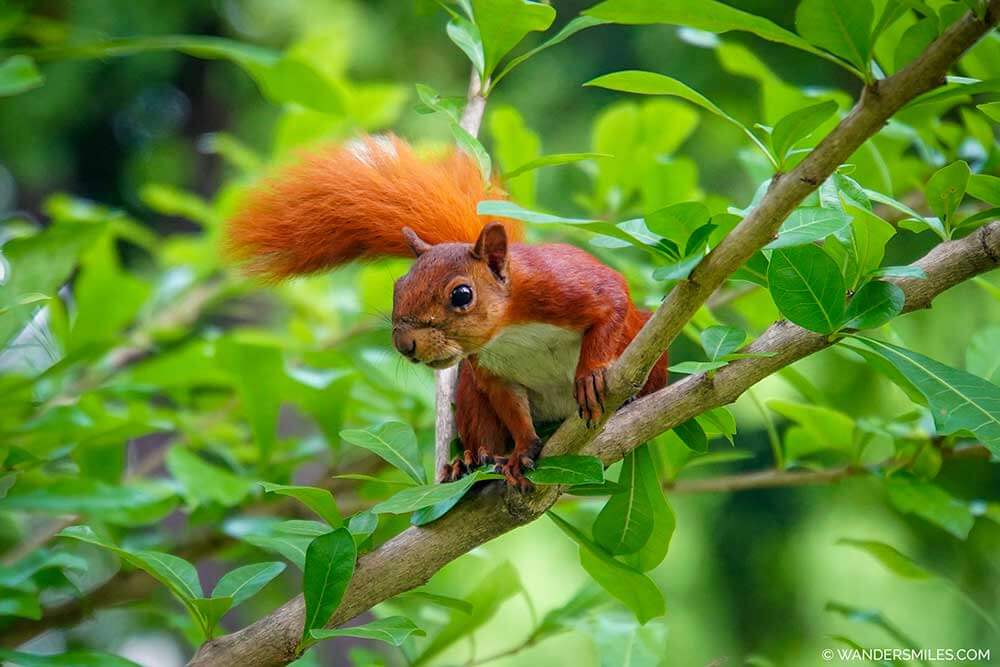
Explore tunnels of Castillo San Felipe de Barajas
Castillo San Felipe de Barajas is a historic fortress built by the Spanish during the colonial period to protect the city from enemy attacks and is considered one of the most impressive examples of military architecture in South America.
The castle was built in 1536 on the Hill of San Lázaro overlooking the city and the harbour, providing strategic advantages for its defenders. This imposing colonial fort is an impressive site from the walls of Cartagena.
Have fun exploring the underground tunnels, passageways, and chambers, as well as the panoramic views from the platform with a huge Colombian flag.
The San Felipe de Barajas Castle is open daily from 8 am to 6 pm, and the entrance fee is 25,000 COP for adults.
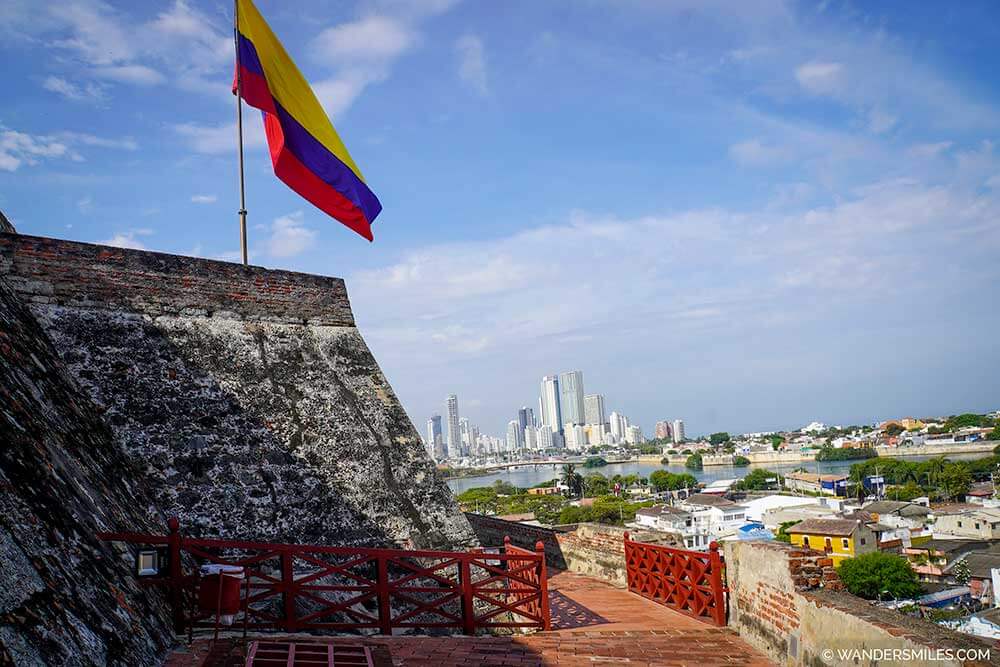
Visit the Monumento a los Zapatos Viejos
The Old Shoes monument, also known as “Monumento a los Zapatos Viejos” in Spanish, is an iconic landmark in Cartagena, Colombia, located behind Castillo San Felipe de Barajas.
The monument of oversized shoes was created in bronze by the Colombian artist and sculptor Héctor Lombana, paying tribute to the poet Luis Carlos López who in one of his poems “A mi ciudad nativa” (To my native town) described his hometown as a pair of old, familiar and welcoming shoes.
Many people climb in to take photos of this symbol of Cartagena. However, with a combination of the sun beating down heating up the metal, and wearing shorts, I decided against this memento of my trip.

Visit the Rosario islands
There are a number of beautiful beaches accessible from Cartagena if you fancy a break from city life. Taking a trip to the Rosario Islands is oneof the top things to do in Cartagena Colombia.
The Rosario Islands are a stunning archipelago comprising of 27 islands, offering pristine beaches, crystal-clear waters, and a variety of water-based activities. Isla Grande and Isla del Rosario are the two biggest of the islands, and are the main arrival points.
Join a popular day tour is on a catamaran with lunch and snorkelling to see the diverse range of marine life, including colourful fish, coral reefs, and even sea turtles.
If the day tours to Rosario Islands seem a little short for you, take the boat from Muelle de la Bodeguita port, and choose from the selection of hotels and eco-lodges on the island.
FAQs: Cartagena Trip
Is Cartagena Colombia safe?
Despite Colombia’s bad reputation, It is safe to visit Cartagena. There is a big police presence in touristy areas such as the Walled City, Getsemani, and Bocagrande. Take the usual precautions against pickpockets, especially at night, and avoid getting too tipsy if you’re on your own.
As always, ensure you get the right travel insurance to suit your needs, it’s way better than finding out the hard way. Check out these worthy options to help your trip go smoothly.
Get 5% off your travel insurance with HeyMondo. Benefit from 24-hour medical assistance, 365 days a year with single, multi-trip, and long-stay insurance, cover for Covid-19 and non-refundable expenses. The handy app makes this a simple process! They give a little back too by contributing to ‘Doctors Without Borders’.
SafetyWing for Digital Nomads. Benefit from 24/7 assistance, comprehensive and medical cover including Covid-19. Buy insurance whilst you are travelling, with the option of global health insurance.
When is the best time to visit Cartagena Colombia?
Cartagena de Indias is a tropical climate. The temperature doesn’t vary a great deal, but June through September are the hottest months.
Expect a rainy period from May to November, with October and November being the wettest months. The dry period from December to April makes this the best time to visit Cartagena Colombia.
How many days is enough for Cartagena Colombia?
I stayed three days in Cartagena which was enough to explore the main landmarks, and enjoy the unmissable things to do in Cartagena Colombia. Ideally, I’d recommend 4 days to explore Cartagena if you’d like to enjoy the islands and the beach life of the Caribbean Coast.
Where is the best place to stay in Cartagena Colombia?
The best area to stay in Cartagena Colombia is within the Walled City where you will find a mix of luxury and budget accommodation.
Young travellers tend to gravitate towards the barrio of Getsemani to be in the midst of the trendy nightlife. Chilled beach-goers would look to stay in Bocagrande.
My list of the best hostels in Cartagena Colombia as recommended by avid travellers might a handy resource.
Booking Resources for your Cartagena Trip
Cartagena Tours
- Group multi-day trips including Cartagena, try G Adventures Colombia Tours
- Private and group tours with Get Your Guide and Viator
Accommodation links for Cartagena
- Find the best ACCOMMODATION deals with Booking.com
- Find the best HOSTEL deals with Hostelworld
- Live with a local, find a room on Homestay
Transport links for Cartagena
- Book onward buses with BusBud
- Hire your own wheels with Discover Cars
- Best flight deals with Skyscanner
- Private transfer to/from Rafael Núñez International Airport
Recommended Gear for Cartagena
- GET 15% OFF WATER-TO-GO Bottle (Code WM15)
- GET 10% OFF ARTFULLY WILD sustainable clothing (Code: WM10)
- Find your perfect backpack – I only use Osprey backpacks for my travels!
